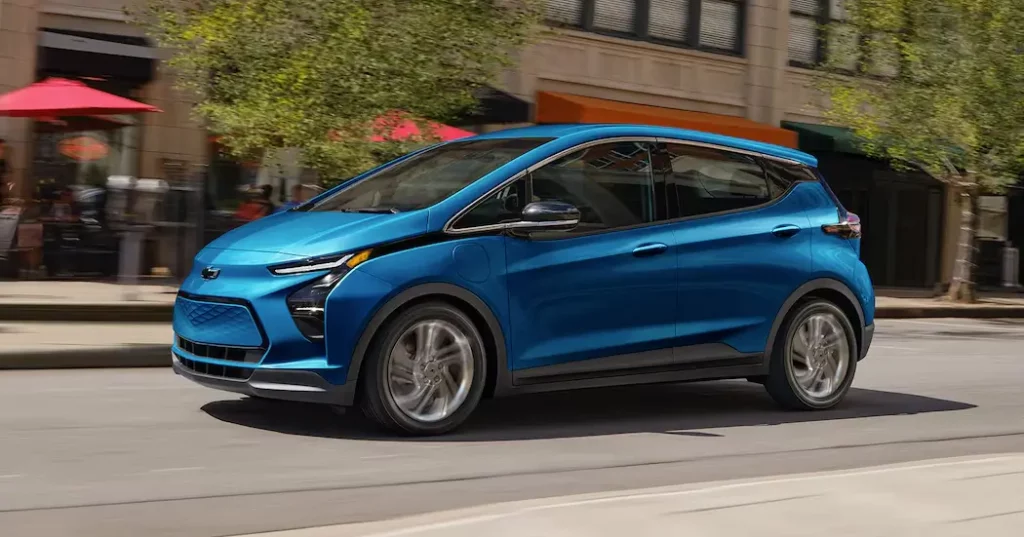Introduction
In the vast landscape of the US automotive market, the competition between small cars and larger vehicles is both fierce and fascinating. With the rise of SUVs and trucks, one might assume that small cars would struggle to find their place.
However, these compact vehicles continue to carve out a significant niche, driven by factors like fuel efficiency, affordability, and urban convenience. This article delves into how small cars hold their ground against their larger counterparts, supported by data and insights.

How Small Cars Compete with Larger Vehicles in the US Market (PDF)
The Popularity of Small Cars in the US Market
Small cars, often categorized as subcompact and compact cars, have seen fluctuating popularity in the US market. Despite the dominance of larger vehicles, there remains a steady demand for smaller cars due to their unique advantages.
Current Market Share of Small Cars
According to recent data from the Automotive News Data Center, small cars accounted for approximately 24% of the US car market in 2023. This figure, while lower than the market share of larger vehicles, indicates a significant consumer base.
| Year | Small Car Market Share (%) | Larger Vehicle Market Share (%) |
|---|---|---|
| 2019 | 27 | 73 |
| 2020 | 25 | 75 |
| 2021 | 23 | 77 |
| 2022 | 24 | 76 |
| 2023 | 24 | 76 |
Advantages of Small Cars
Fuel Efficiency
A key factor that draws consumers to small cars is their excellent fuel efficiency. Due to their smaller engines and lighter build, these vehicles use less fuel, making them cost-effective options for everyday driving.
Fuel Economy Comparison
| Vehicle Type | Average MPG (City) | Average MPG (Highway) |
|---|---|---|
| Small Cars | 28 | 37 |
| Midsize Cars | 24 | 34 |
| SUVs | 20 | 27 |
| Trucks | 18 | 25 |
Affordability
Small cars are typically more affordable than larger vehicles. This cost-effectiveness not only applies to the purchase price but also to insurance, maintenance, and repair expenses.
Average Purchase Price
| Vehicle Type | Average Purchase Price ($) |
|---|---|
| Small Cars | 20,000 |
| Midsize Cars | 25,000 |
| SUVs | 35,000 |
| Trucks | 40,000 |
Urban Mobility
Small cars excel in urban environments due to their easy maneuverability and parking convenience. Their compact size makes them perfect for navigating busy streets and squeezing into tight parking spots.
Technological Advancements in Small Cars
Modern small cars are packed with advanced technology and safety features, narrowing the gap between them and larger vehicles. Innovations such as adaptive cruise control, lane-keeping assist, and advanced infotainment systems are now common in many small car models.
Safety Features Comparison
| Feature | Small Cars | Larger Vehicles |
|---|---|---|
| Adaptive Cruise Control | Yes | Yes |
| Lane-Keeping Assist | Yes | Yes |
| Automatic Emergency Braking | Yes | Yes |
| Blind Spot Monitoring | Yes | Yes |
Environmental Impact
Small cars have a lower environmental footprint compared to larger vehicles. They produce fewer emissions, making them a greener choice for environmentally conscious consumers.
Emissions Comparison
| Vehicle Type | CO2 Emissions (g/km) |
|---|---|
| Small Cars | 115 |
| Midsize Cars | 150 |
| SUVs | 180 |
| Trucks | 220 |
Consumer Preferences and Trends
Despite the allure of larger vehicles, consumer preferences are gradually shifting towards more sustainable and economical choices. The rising fuel prices and growing environmental awareness contribute to this trend.
Sales Trends
| Year | Small Cars (Units Sold) | Larger Vehicles (Units Sold) |
|---|---|---|
| 2019 | 1,200,000 | 4,000,000 |
| 2020 | 1,100,000 | 3,800,000 |
| 2021 | 1,050,000 | 3,900,000 |
| 2022 | 1,100,000 | 4,100,000 |
| 2023 | 1,150,000 | 4,250,000 |
FAQs
How do small cars compare to larger vehicles in terms of fuel efficiency?
Small cars typically offer better fuel efficiency than larger vehicles due to their lighter weight and smaller engines. On average, small cars achieve 28 MPG in the city and 37 MPG on the highway, whereas larger vehicles like SUVs and trucks average significantly lower MPG.
Are small cars cheaper to maintain than larger vehicles?
Yes, small cars generally have lower maintenance costs compared to larger vehicles. Their parts are often less expensive, and their compact design can lead to lower labor costs for repairs.
Do small cars offer advanced safety features?
Modern small cars come equipped with many advanced safety features, such as adaptive cruise control, lane-keeping assist, and automatic emergency braking, making them as safe as many larger vehicles.
What are the environmental benefits of driving a small car?
Small cars have a smaller environmental footprint due to their lower CO2 emissions. On average, small cars emit 115 g/km of CO2, significantly less than larger vehicles like trucks, which emit around 220 g/km.
How do small cars handle urban driving conditions?
Small cars excel in urban environments due to their compact size, which allows for easy maneuvering through traffic and parking in tight spaces. This makes them a practical choice for city dwellers.
Are small cars becoming more popular in the US market?
While larger vehicles dominate the US market, small cars maintain a steady market share, with sales trends showing a slight increase in recent years. This can be attributed to their affordability, fuel efficiency, and suitability for urban living.
Conclusion
Small cars continue to hold their own in the competitive US automotive market. Their advantages in fuel efficiency, affordability, and urban mobility make them a compelling choice for many consumers. As technological advancements and environmental concerns drive consumer preferences, small cars are likely to remain a significant player in the market.



